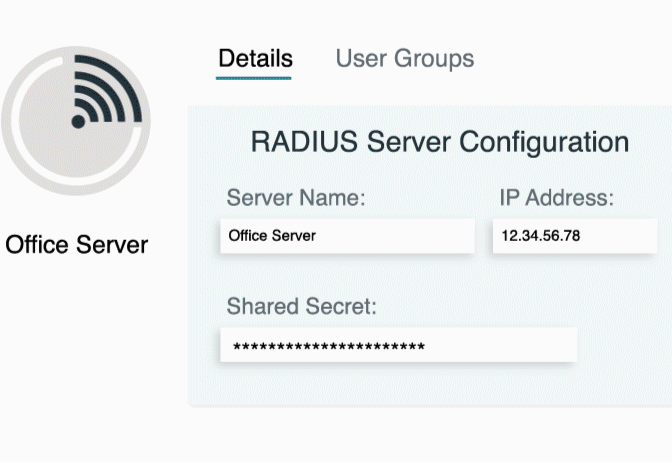Updated on March 7, 2025
Address exhaustion happens when the pool of available IP addresses, especially IPv4, runs out. IPv4 has a limited supply of about 4.3 billion addresses, and with the rise of internet-connected devices like smartphones, IoT gadgets, and cloud services, these addresses are quickly being used up.
This article looks at what causes address exhaustion, how it works, and the impact it has. It also covers solutions like adopting IPv6, using Network Address Translation (NAT), and implementing Classless Inter-Domain Routing (CIDR).
Definition and Core Concepts
What Is Address Exhaustion?
Address exhaustion happens when all available IP addresses in a protocol, like IPv4, are used up, leaving no room for new devices or networks. IPv4, with its 32-bit structure, is limited to about 4.3 billion unique addresses.
While 4.3 billion might seem like a lot, the rapid growth of internet usage, IoT, and mobile technologies has made this number insufficient. If not addressed, this exhaustion creates serious challenges for expanding networks, connecting devices, and supporting the global internet infrastructure.
Why IPv4 Faces Address Exhaustion
IPv4 address exhaustion stems from several interrelated factors:
- 32-Bit Addressing Constraints: IPv4 was created decades ago, long before anyone could predict the internet’s massive growth. Its 32-bit system limits the number of IP addresses to 4,294,967,296 unique combinations.
- Inefficient Early Allocations: In the early days of the internet, IP addresses were handed out generously without much thought for future needs. Large organizations and universities received huge blocks of addresses, many of which are still underused today.
- Rise in Connected Devices: Today, almost everything needs an internet connection—smartphones, tablets, smart TVs, IoT devices, cloud servers, and even industrial machines. This surge in connected devices has quickly outgrown IPv4’s limited capacity.
- Global Internet Growth: As more people and businesses get online, especially in developing regions, the demand for IP addresses has skyrocketed, putting even more strain on IPv4.
How Address Exhaustion Works
Allocation and Registration of IP Addresses
IP addresses are allocated and managed through a hierarchical system involving:
- IANA (Internet Assigned Numbers Authority): The global organization responsible for overseeing IP address distribution.
- RIRs (Regional Internet Registries): Five regional bodies—ARIN, RIPE NCC, APNIC, AFRINIC, and LACNIC—manage allocations to ISPs, businesses, and other organizations.
Over time, many RIRs have reported full depletion of their available IPv4 address pools, pressuring organizations to seek alternative solutions like IPv6 or the secondary address market.
The Role of NAT (Network Address Translation)
Network Address Translation (NAT) lets multiple devices on a private network share a single public IP address. It works by assigning private IPs to devices and mapping them to a public IP for internet access. This helps save IPv4 addresses by reducing how many public IPs are needed.
While NAT has been essential in slowing down IPv4 exhaustion, it also comes with challenges like added complexity, limitations for some applications, and more strain on network resources.
How Address Exhaustion Affects Network Operations
The impacts of address exhaustion reach far beyond technical inconvenience:
- Difficulty Obtaining IPv4 Addresses: Businesses and ISPs increasingly struggle to secure new IPv4 allocations. With limited supply, many turn to leasing IPv4 addresses or buying them on secondary markets—a costly and time-consuming process.
- Reliance on Workarounds: Address exhaustion forces organizations to lean heavily on stopgap solutions like NAT or Carrier-Grade NAT (CGNAT), which can degrade network performance and add administrative overhead.
- Limited Scalability: Startups and established enterprises alike face constraints when expanding or deploying services due to insufficient IP resources.
Key Solutions to Address Exhaustion
Transition to IPv6
One of the most comprehensive solutions to address exhaustion is transitioning to IPv6. Designed as a successor to IPv4, IPv6 uses a 128-bit addressing scheme, offering an astronomical number of unique addresses—340 undecillion, to be precise.
Benefits of IPv6 include:
- Virtually Infinite Address Pool: Elimination of address shortages.
- Simplified Network Design: Reduced reliance on NAT.
- Enhanced Security: Native support for improved encryption and authentication protocols.
Despite these advantages, IPv6 adoption has been slow due to hardware incompatibility and the challenges of integrating it into existing IPv4-based systems. Enterprises often implement dual-stack strategies, running IPv4 and IPv6 concurrently during transitions.
Use of NAT and CGNAT (Carrier-Grade NAT)
NAT enables organizations to conserve public IPv4 space by assigning private addresses to devices. CGNAT, a large-scale version of NAT used by ISPs, further extends IPv4 usability by sharing public IPs among multiple customers.
Drawbacks of NAT/CGNAT include:
- Performance Bottlenecks: Increased latency and reduced throughput.
- Application Limitations: Challenges with VoIP, peer-to-peer networking, and certain real-time applications.
IP Address Reclamation and Redistribution
Efforts to reclaim and redistribute unused IPv4 blocks help prolong the viability of IPv4. Some RIRs actively recover underutilized addresses from organizations and return them to the allocation pool.
Additionally, the secondary market for IPv4 addresses allows entities with excess capacity to sell or lease their addresses to those in need—a practice that has grown in importance as official allocations dwindle.
Implementation of CIDR (Classless Inter-Domain Routing)
CIDR improves IP allocation efficiency by replacing class-based addressing with variable-length subnet masks (VLSM). This allows organizations to allocate only the number of addresses they actually need, reducing waste and improving overall resource utilization.
The Future of IP Address Management
How Organizations Are Preparing for IPv6
Forward-thinking companies are actively preparing for IPv6 adoption with the following strategies:
- Phased Transitions: Gradually moving critical systems to IPv6 while keeping IPv4 support.
- Infrastructure Upgrades: Updating hardware, software, and networks to be IPv6-ready.
- Employee Training: Teaching IT teams about IPv6 standards and best practices.
Challenges of Transitioning to IPv6
Despite its advantages, adopting IPv6 faces several obstacles:
- Legacy Systems: Many devices still depend on IPv4 and don’t support IPv6.
- Unclear Immediate Benefits: Some organizations delay adoption due to uncertain short-term returns.
The Future of IPv6
IPv6 is seen as the long-term solution to address exhaustion. Once fully adopted, it could permanently solve IP shortages and enable seamless global connectivity.
Glossary of Terms
- IPv4 (Internet Protocol Version 4): A 32-bit addressing protocol with ~4.3 billion unique addresses.
- IPv6 (Internet Protocol Version 6): A 128-bit addressing protocol offering a vast number of unique IP addresses.
- NAT (Network Address Translation): A method allowing multiple devices to share a single public IP address.
- CGNAT (Carrier-Grade NAT): An extension of NAT, enabling ISPs to share public IPs among customers.
- CIDR (Classless Inter-Domain Routing): A system replacing class-based IP routing with variable-length subnet masks.
- RIR (Regional Internet Registry): Organizations managing IP address allocations within geographic regions.






